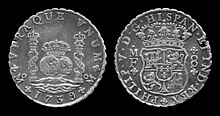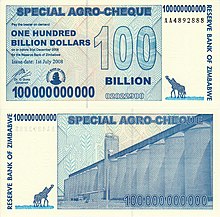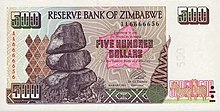|
Dollar Countries that use the US dollar Countries or territories that use a non-US currency named dollar Countries that formerly used a dollar currency  Dollar is the name of more than 25 currencies. The United States dollar, named after the international currency known as the Spanish dollar, was established in 1792 and is the first so named that still survives. Others include the Australian dollar, Brunei dollar, Canadian dollar, Eastern Caribbean dollar, Hong Kong dollar, Jamaican dollar, Liberian dollar, Namibian dollar, New Taiwan dollar, New Zealand dollar, Singapore dollar, Trinidad and Tobago Dollar and several others. The symbol for most of those currencies is the dollar sign $; the same symbol is used by many countries using peso currencies. The name "dollar" originates from the "thaler" (from thal, German for valley) suffix in the name of a 29 g silver coin called the Joachimsthaler minted in Bohemia. Economies that use a "dollar"Other countries that use "United States dollar"
Other territories that use a "dollar"
Countries unofficially accepting "dollars"Countries and regions that have previously used a "dollar" currency
HistoryEtymologyOn 15 January 1520, the Kingdom of Bohemia began minting coins from silver mined locally in Joachimsthal and marked on reverse with the Bohemian lion. The coins were named Joachimsthaler after the town, becoming shortened in common usage to thaler or taler. The town's name is derived from Saint Joachim, coupled with the German word Thal (Tal in modern spelling), which means 'valley' (cf. the English term dale); the coin is thus "from the valley of [St] Joachim".[11] This name found its way into other languages, for example:[12]
In contrast to other languages which adopted the second part of word joachimsthaler, the first part found its way into Russian language and became efimok, yefimok (ефимок).[13] The predecessor of the Joachimsthaler was the Guldengroschen or Guldiner which was a large silver coin originally minted in Tirol in 1486 and introduced into the Duchy of Saxony in 1500. The King of Bohemia wanted a similar silver coin, which became the Joachimsthaler. Europe and colonial North America The Joachimsthaler of the 16th century was succeeded by the longer-lived Reichsthaler of the Holy Roman Empire, used from the 16th to 19th centuries. The Netherlands also introduced its own dollars in the 16th century: the Burgundian Cross Thaler (Bourgondrische Kruisdaalder), the German-inspired Rijksdaalder, and the Dutch lion dollar (leeuwendaalder). The latter coin was used for Dutch trade in the Middle East, in the Dutch East Indies and West Indies, and in the Thirteen Colonies of North America.[14] For the English North American colonists, however, the Spanish peso or "piece of eight" has always held first place, and this coin was also called the "dollar" as early as 1581. Spanish dollars or "pieces of eight" were distributed widely in the Spanish colonies in the New World and in the Philippines.[15][16][17][18][19] Origins of the dollar signThe sign is first attested in business correspondence in the 1770s as a scribal abbreviation "ps", referring to the Spanish American peso,[20][21] that is, the "Spanish dollar" as it was known in British North America. These late 18th- and early 19th-century manuscripts show that the s gradually came to be written over the p developing a close equivalent to the "$" mark, and this new symbol was retained to refer to the American dollar as well, once this currency was adopted in 1785 by the United States.[22][23][24][25][26] Adoption by the United StatesBy the time of the American Revolution, the Spanish dólar gained significance because they backed paper money authorized by the individual colonies and the Continental Congress.[16] Because Britain deliberately withheld hard currency from the American colonies, virtually all the non-token coinage in circulation was Spanish (and to a much lesser extent French and Dutch) silver, obtained via illegal but widespread commerce with the West Indies. Common in the Thirteen Colonies, Spanish dólar were even legal tender in one colony, Virginia. On 2 April 1792, U.S. Secretary of the Treasury Alexander Hamilton reported to Congress the precise amount of silver found in Spanish dollar coins in common use in the states. As a result, the United States dollar was defined[27] as a unit of pure silver weighing 371 4/16th grains (24.057 grams), or 416 grains of standard silver (standard silver being defined as 371.25/416 in silver, and balance in alloy).[28] It was specified that the "money of account" of the United States should be expressed in those same "dollars" or parts thereof. Additionally, all lesser-denomination coins were defined as percentages of the dollar coin, such that a half-dollar was to contain half as much silver as a dollar, quarter-dollars would contain one-fourth as much, and so on. In an act passed in January 1837, the dollar's weight was reduced to 412.5 grains and alloy at 90% silver, resulting in the same fine silver content of 371.25 grains. On 21 February 1853, the quantity of silver in the lesser coins was reduced, with the effect that their denominations no longer represented their silver content relative to dollar coins. Various acts have subsequently been passed affecting the amount and type of metal in U.S. coins, so that today there is no legal definition of the term "dollar" to be found in U.S. statute.[29][30][31] Currently the closest thing[clarification needed] to a definition is found in United States Code Title 31, Section 5116, paragraph b, subsection 2: "The Secretary [of the Treasury] shall sell silver under conditions the Secretary considers appropriate for at least $1.292929292 a fine troy ounce." Silver was mostly removed from U.S. coinage by 1965 and the dollar became a free-floating fiat money without a commodity backing defined in terms of real gold or silver. The US Mint continues to make silver $1-denomination coins, but these are not intended for general circulation. Relationship to the troy poundThe quantity of silver chosen in 1792 to correspond to one dollar, namely, 371.25 grains of pure silver, is very close to the geometric mean of one troy pound and one pennyweight. In what follows, "dollar" will be used as a unit of mass. A troy pound being 5760 grains and a pennyweight being 240 times smaller, or 24 grains, the geometric mean is, to the nearest hundredth, 371.81 grains. This means that the ratio of a pound to a dollar (15.52) roughly equals the ratio of a dollar to a pennyweight (15.47). These ratios are also very close to the ratio of a gram to a grain: 15.43. Finally, in the United States, the ratio of the value of gold to the value of silver in the period from 1792 to 1873 averaged to about 15.5, being 15 from 1792 to 1834 and around 16 from 1834 to 1873. This is also nearly the value of the gold to silver ratio determined by Isaac Newton in 1717.[32] That these three ratios are all approximately equal has some interesting consequences. Let the gold to silver ratio be exactly 15.5. Then a pennyweight of gold, that is 24 grains of gold, is nearly equal in value to a dollar of silver (1 dwt of gold = $1.002 of silver). Second, a dollar of gold is nearly equal in value to a pound of silver ($1 of gold = 5754 3/8 grains of silver = 0.999 Lb of silver). Third, the number of grains in a dollar (371.25) roughly equals the number of grams in a troy pound (373.24). Usage in the United KingdomThere are two quotes in the plays of William Shakespeare referring to dollars as money. Coins known as "thistle dollars" were in use in Scotland during the 16th and 17th centuries,[33] and use of the English word, and perhaps even the use of the coin, may have begun at the University of St Andrews.[34] This might be supported by a reference to the sum of "ten thousand dollars" in Macbeth (act I, scene II) (an anachronism because the real Macbeth, upon whom the play was based, lived in the 11th century). In the Sherlock Holmes story "The Man with the Twisted Lip" by Sir Arthur Conan Doyle, published in 1891, an Englishman posing as a London beggar describes the shillings and pounds he collected as dollars.[citation needed] In 1804, a British five-shilling piece, or crown, was sometimes called "dollar". It was an overstruck Spanish eight real coin (the famous "piece of eight"), the original of which was known as a Spanish dollar. Large numbers of these eight-real coins were captured during the Napoleonic Wars, hence their re-use by the Bank of England. They remained in use until 1811.[35][36] During World War II, when the U.S. dollar was (approximately) valued at five shillings, the half crown (2s 6d) acquired the nickname "half dollar" or "half a dollar" in the UK. Usage elsewhereChinese demand for silver in the 19th and early 20th centuries led several countries, notably the United Kingdom, United States and Japan, to mint trade dollars, which were often of slightly different weights from comparable domestic coinage. Silver dollars reaching China (whether Spanish, trade, or other) were often stamped with Chinese characters known as "chop marks", which indicated that that particular coin had been assayed by a well-known merchant and deemed genuine. Other national currencies called "dollar"  Prior to 1873, the silver dollar circulated in many parts of the world, with a value in relation to the British gold sovereign of roughly $1 = 4s 2d (21p approx). As a result of the decision of the German Empire to stop minting silver thaler coins in 1871, in the wake of the Franco-Prussian War, the worldwide price of silver began to fall.[37] This resulted in the U.S. Coinage Act (1873) which put the United States onto a 'de facto' gold standard. Canada and Newfoundland were already on the gold standard, and the result was that the value of the dollar in North America increased in relation to silver dollars being used elsewhere, particularly Latin America and the Far East. By 1900, value of silver dollars had fallen to 50 percent of gold dollars. Following the abandonment of the gold standard by Canada in 1931, the Canadian dollar began to drift away from parity with the U.S. dollar. It returned to parity a few times, but since the end of the Bretton Woods system of fixed exchange rates that was agreed to in 1944, the Canadian dollar has been floating against the U.S. dollar. The silver dollars of Latin America and South East Asia began to diverge from each other as well during the course of the 20th century. The Straits dollar adopted a gold exchange standard in 1906 after it had been forced to rise in value against other silver dollars in the region. Hence, by 1935, when China and Hong Kong came off the silver standard, the Straits dollar was worth 2s 4d (11.5p approx) sterling, whereas the Hong Kong dollar was worth only 1s 3d sterling (6p approx). The term "dollar" has also been adopted by other countries for currencies which do not share a common history with other dollars. Many of these currencies adopted the name after moving from a £sd-based to a decimalized monetary system. Examples include the Australian dollar, the New Zealand dollar, the Jamaican dollar, the Cayman Islands dollar, the Fiji dollar, the Namibian dollar, the Rhodesian dollar, the Zimbabwe dollar, and the Solomon Islands dollar.
See alsoReferences
External linksWikimedia Commons has media related to Dollar.
|

